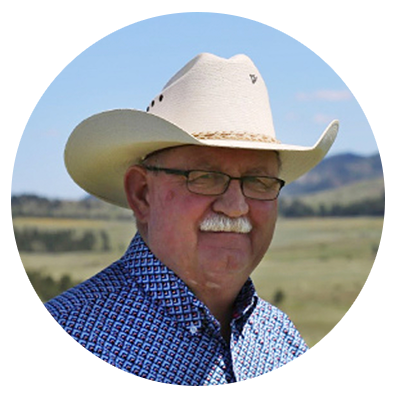Where should you buy land in Montana?
If you’re looking for a dream property in Montana, the state has so much variety to offer that almost anyone would be able to find their ideal location. Different parts of the state draw people for different reasons, so the question is not “what’s the best region of Montana?” but, “which area of Montana fits YOUR investment needs and what are YOU likely to enjoy the most?” Let’s cover some of the most important areas of Montana together.
Eastern Montana
Eastern Montana is where you’ll find large tracts of relatively flat, fertile land for farming and ranching. While all the tourists are hanging out in the mountains of Western Montana, all the hardworking folks who are making the land produce food are concentrated in Eastern Montana, along with its share of cattle ranches and a large variety of niche agricultural products. Don’t get the idea that there’s any lack of beauty in Eastern Montana, though. There’s a whole different kind of beauty here, which inspires the love of the locals and visitors alike.
Western Montana
Western Montana is the portion of Montana west of the Continental Divide, and is the place where soaring peaks meet stunning blue lakes. It’s the place where hiking trails under tremendous blue skies pass through lush forests and cross sparkling streams. Western Montana also boasts the iconic Glacier National Park where 3 mountain ranges converge with over 150 mountain peaks soaring above 8,000 feet. Despite having only 6% of Montana’s farmland, Western Montana produces 68% of the state’s potatoes and hosts 82% of the state’s orchards. The area also grows excellent timber. One note to be aware of is that the average price per acre in Western Montana averages about triple the price in the rest of the state, so if you’re looking to sell, this is a factor in your favor.
Region Spotlights
The Yellowstone River Valley
The Yellowstone River Valley is home to some of the most beautiful, productive land in Montana. This river valley borders the Yellowstone River all the way from its origin in Yellowstone National Park to the moment 676 miles later when it merges with the Missouri river in North Dakota. The land in this river valley offers great opportunities for both farming and ranching, thanks to fertile soils, good rainfall, great irrigation opportunities, and beautiful, wide open spaces.
This allows you to make a living in agriculture from fewer acres of land. For instance, Yellowstone County (where Billings, MT is located), has the most 50-500 acre farms of any county in the state. At the same time, the county has more cattle farms, brings in more dollars for the cattle than even Beaverhead County (discussed below), and also manages to produce 17% of all the corn in Montana, despite only comprising 2.76% of the state. Adjacent to Yellowstone County, Treasure County had the highest average agricultural income per farm of any county in the state, at $372,118 in 20171. Big Horn County (also along the Yellowstone River Valley) has more acres of agricultural land than any county in the state, has the largest average-size farm of any county in the state, and has an average net cash farm income that’s 150% of the Montana average while boasting one of the lowest prices per acre in the state.
The Golden Triangle
If you’re planning on growing wheat, you probably want to buy land somewhere in Montana’s Golden Triangle, which we briefly referenced in the Montana Highlights article. The Golden Triangle is located in north-central Montana and forms a rough triangle between the towns of Havre, Conrad, and Great Falls. Chouteau county occupies the majority of this Golden Triangle, and it produced approximately 2.5 times as much wheat as the next-largest wheat producing county in Montana1 while bringing in $170 million in agricultural goods sold1. So for the wheat-growers, Chouteau and the surrounding counties might be a good place for you to start your land search. Several of the surrounding counties are also part of this prosperous region, including
6. You control the food supply
Once that tipping point occurs, land prices will likely see a sharp increase in value as the income potential per acre will drive up values.
7. No farming knowledge required
The landowner doesn’t have to know anything about farming. You can hire a farm manager or lease the land to a producer, bringing you year roundly passive income.
Beaverhead County
Beaverhead County is located in the southwestern corner of Montana. Due to a surprising configuration of the mountains, the Continental Divide makes a C-shaped swoop around the edges of Beaverhead County, placing this county on the east side of the Continental divide. This means the land in the county is watered from all the snowmelt that flows from the mountain ranges to the North, West, and South of it. Despite having only 2% of the farmland in the state, Beaverhead has almost 13% of the irrigated acres in the state. The fertile, well-watered land with hardy native grasses allows Beaverhead County to support more cattle and calves than any other county in the state.
American Land Brokers is Your Source for Choosing Montana Land
Looking for land in a particular area of Montana? Or are you wanting to buy land for a particular purpose, and wondering which region of Montana will give you the best outcomes? Contact our Montana brokers to get the kind of boots-on-the-ground insight that will help you to make the right decision for you. We look forward to hearing from you.
Featuring
J.R. BREEN


